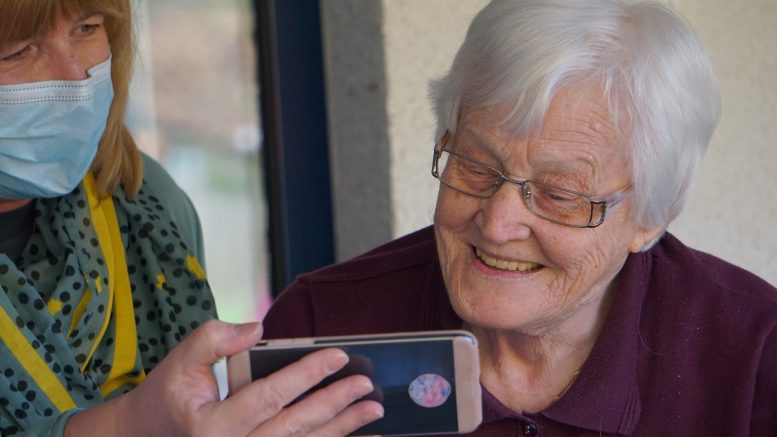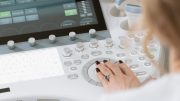It is obvious to anyone that the pandemic has had a huge impact on elderly care, both in establishing new approaches to care in general, and in accelerating the many trends that were already gaining ground over the last few years. Unfortunately for medical decision makers – and elderly clients themselves – the amount of effort that it has taken for institutions to continue providing the best possible care throughout the pandemic has left little time for keeping up with new innovations in the industry.
Whether we are talking about care homes or home care, 2020 and 2021 have acted as a catalyst for all manner of changes in looking after the elderly. From our experience speaking with medical decision makers, healthtech providers, care providers, systems integrators – and of course patients – we wanted to provide insights into what we believe will be the most promising innovations shaping care strategies in the year ahead.
Telemedicine
Telemedicine (or Telehealth/e-medicine) is simply the use of telecommunication and IT solutions for providing remote health assessments and therapies. This is a broad definition, including consultations over video, or voice messaging services via mobile phones, computers and/or tablets. The global pandemic greatly accelerated the general acceptance of telemedicine, as it allowed providers to deliver medical care while abiding by the rules associated with lockdowns and social distancing.
With many of these rules and lockdowns being reinstated in places, Telemedicine isn’t going anywhere any time soon. The added pressure on elderly care services has meant an increasing reliance on telemedicine to meet demand, and its ability to quickly address clients’ medical needs at scale means that it will continue to be used globally to fill the gaps caused by the care staffing crisis. On paper this seems like an excellent way to relieve pressure on care staff working in elderly care, but it does come with the trade-off of reducing the amount of in-person professional medical care a patient might receive. Balancing the advantages of telemedicine with its drawbacks will be something healthcare decision makers will need to carefully consider moving forward.
Monitoring solutions
Providing the best possible care for the elderly is reliant on having accurate information with which to work, and monitoring solutions in elderly care are key to providing this. While the use of things like motion sensors are common in both care homes and residential settings, they are unsuitable for anything but the most rudimentary of patient monitoring. In an increasingly smart and interconnected world, many of the current systems are not intuitive enough to deliver truly effective patient management. A connected camera system monitored by a human operator is something we’ve seen much more of in the last decade but having to constantly monitor multiple residents through multiple video streams is an unnecessary burden on staff when that time could be spent on actually providing care.
Wearables have taken on increasing prominence when monitoring elderly people at home or in assisted living facilities – innovations able to track location, movement, medication, heart rate and many other signifiers that medical staff can use to help identify emerging issues, and tailor care strategies to individual needs. Other systems that can provide a wealth of data are advanced computer vision monitoring solutions. Using human activity recognition software, in conjunction with camera systems, we now have software that can correctly identify when a patient is in need of assistance, and alert staff immediately, without the need for staff to constantly check on them. Not only do systems like this cut down on unnecessary in-person contact (and opportunities to spread diseases), but they also help residents live their lives without unnecessary interruptions, as well as reducing the time lost in responding to false alarms by staff.
Artificial Intelligence
Smarter and more advanced monitoring solutions are only one part of the puzzle, however. Artificial Intelligence innovations continue to grow in importance for medical decision makers in the elderly care space because it is uniquely suited to turning data gathered from multiple sources into positive actions for caregivers and elderly residents.
As mentioned previously, devices that can keep track of the location, movement, medication levels and heart rate of elderly people can help inform care decisions, however this process can be sped up enormously by AI systems that take a holistic view of a patient’s medical history, and which can flag where there is a cause for concern. For example – an AI powered system identifying a change in the number of bathroom visits by a patient could be identifying the first signs of a urinary tract infection before care staff are even able to detect a problem. Picking up on an increase in patient falls or “wandering behaviour” could help doctors identify physical or mental infirmity. Much like with Telemedicine, AI in elderly care needs to be used to support and enhance in-person care, rather than replace it.
Robotics
Even today, the use of robots in care settings sounds fanciful, but a robot’s ability to perform simple tasks that would normally need close physical contact make them the ideal tool to limit the person-to-person spread of diseases, meaning they have garnered much attention in the last couple of years.
The focus will shift to how robots can take the pressure off of overstretched healthcare workers, and the families of those elderly persons that still live alone. From the most basic robots that can be used to deliver food or medicine to patients in care, to the more heavy-duty machines that can help residents get out of their beds and into a wheelchair, robots are naturally suited for unskilled or heavy lifting tasks – freeing up care staff to provide what they are best suited to do – providing compassionate care. While there is still a great deal of stigma about using robots in ‘human’ roles, aging populations around the world mean that widespread adoption of the technology is inevitable and has likely been accelerated by the recent pandemic.
Full-solution providers
With the wide range of new high-tech tools, innovations and services that are available in the elderly care space, evaluating which ones actually benefit residents the most is a huge problem for medical decision makers. And a huge problem for venture capitalists, for that matter. A problem that is compounded by ensuring that all of these disparate systems can work together and can be used effectively by the care staff on the front line. Care workers are tired of technical complexity that claims to make their jobs easier but increases the amount of technology and bureaucracy with which they have to deal.
Systems integrators and healthtech providers that provide a full-spectrum solution are increasingly plugging this gap. This is actually the culmination of successful systems providers making it easier for their tools to work in conjunction with other tools and reflects a level of consolidation and interoperability in the med-tech space that should benefit care staff and clients alike in the years to come. Often, just knowing which systems can work with other systems can be the deciding factor in choosing what is best for a certain care facility, or even residential home.
The benefits of technology and innovations in elderly care have been brought sharply into focus by the pandemic, but it is important to consider how it will be used beyond the current crisis. Most importantly, decision makers in elderly care settings need to consider how to balance efficiency with the personal support that medical staff provide. In the long term, the focus needs to be on how technology can enable care-staff to provide the best care possible, without trading away the personal, human touch that elderly people in care so badly need.
By Dr. Harro Stokman, CEO of Kepler Vision Technologies





